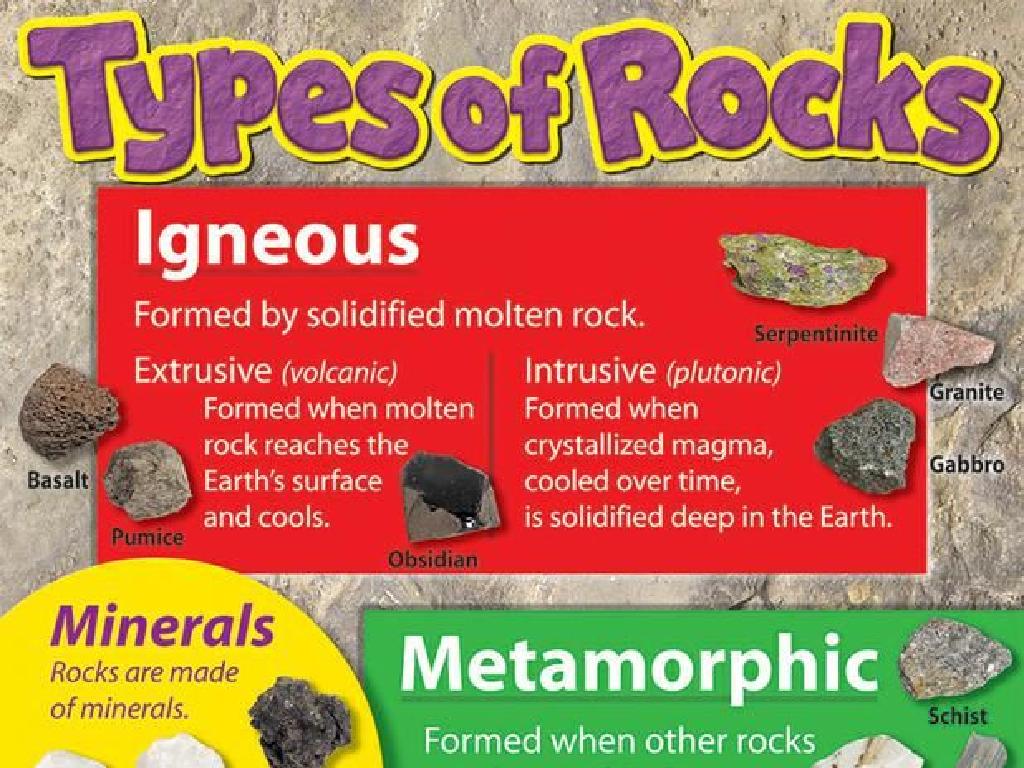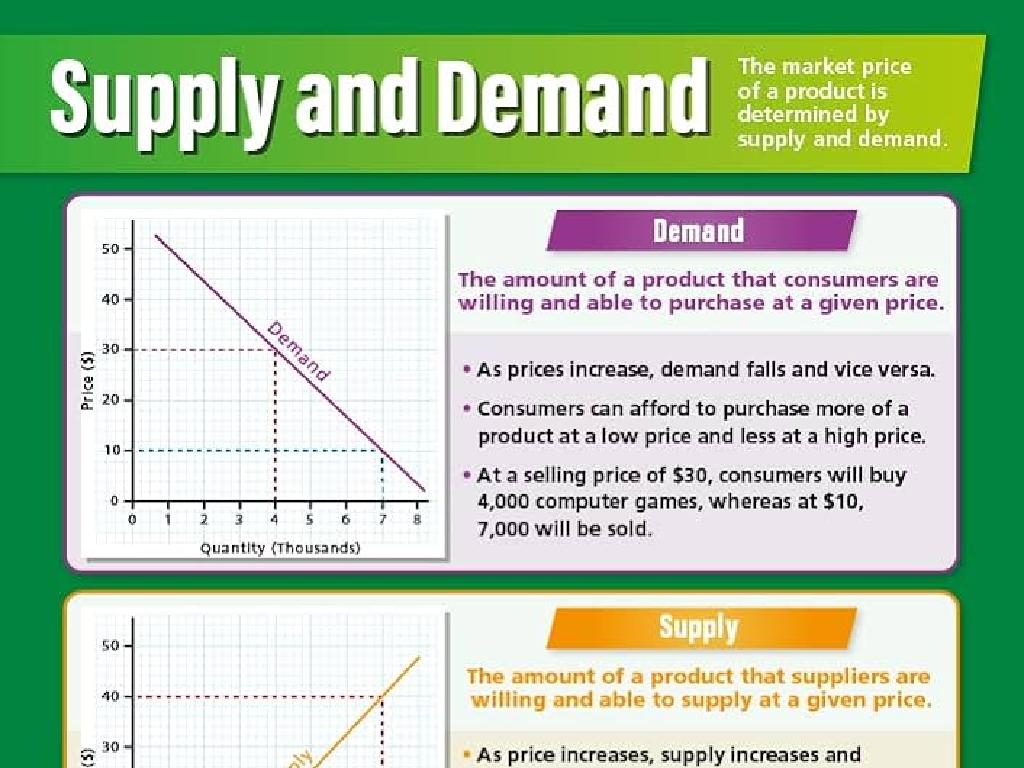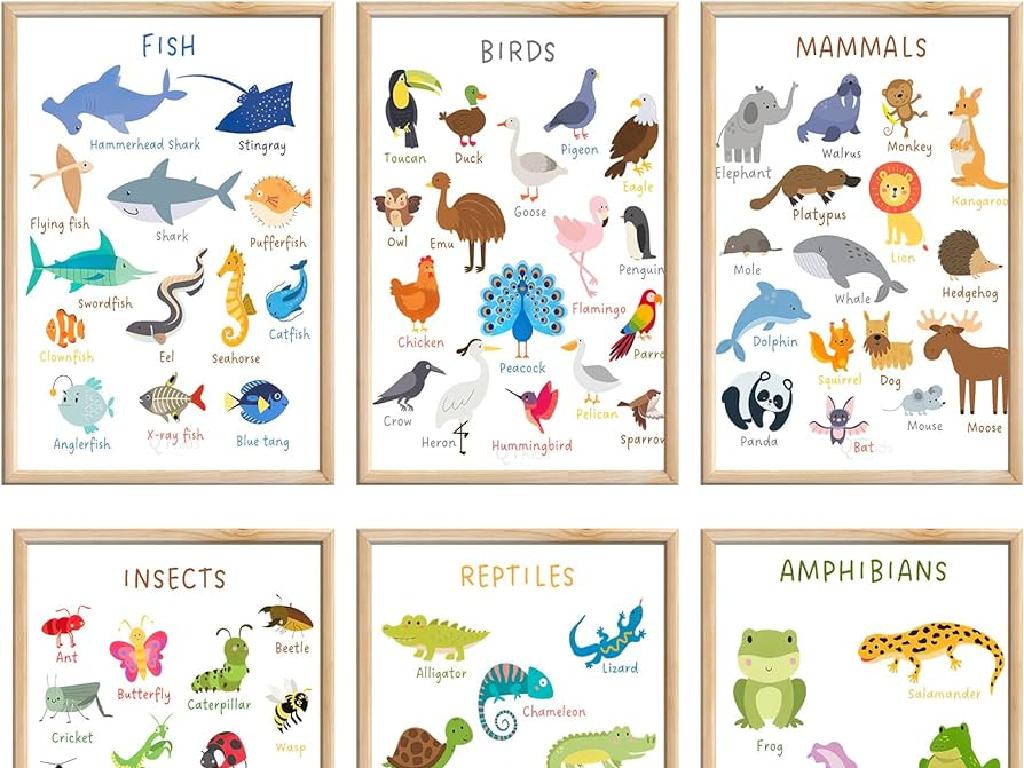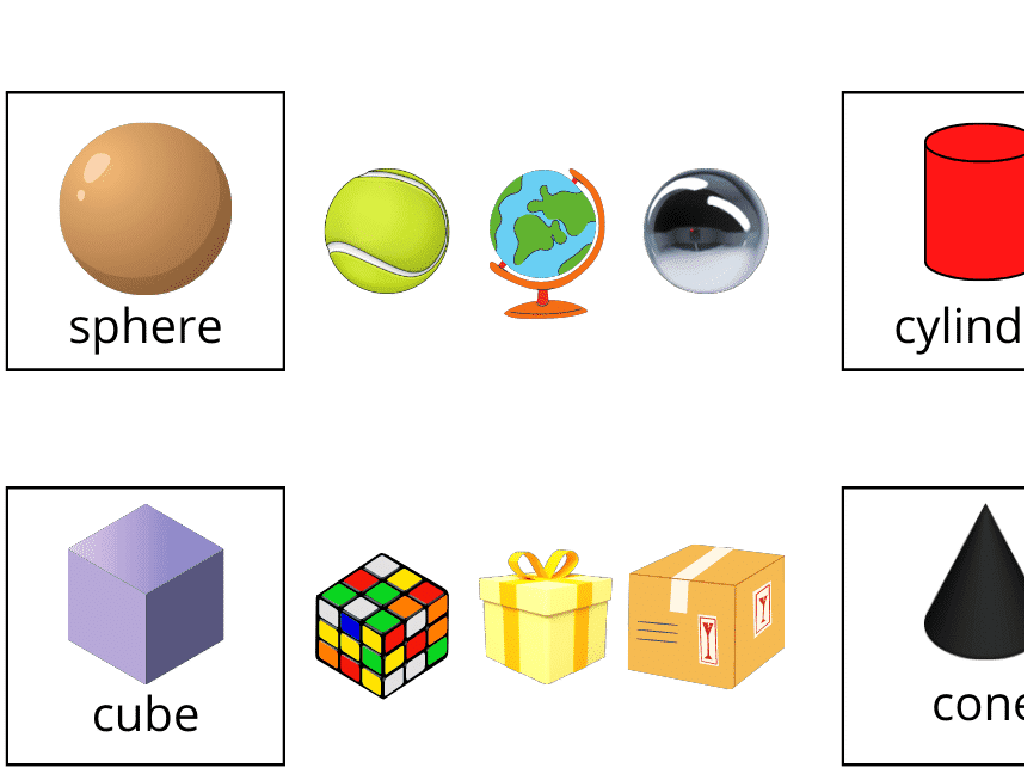Classify Objects By Shape, Color, Material, And Texture
Subject: Science
Grade: First grade
Topic: Materials
Please LOG IN to download the presentation. Access is available to registered users only.
View More Content
Welcome to Materials: Becoming a Materials Detective
– Learn about different materials
– Classify objects by shape and color
– Shapes like circles or squares and colors like red or blue
– Discover materials and textures
– Materials like wood or plastic and textures like smooth or rough
– Engage as a Materials Detective
|
In today’s class, we will introduce the concept of materials to the students. We’ll explore the various properties that can be used to classify objects, such as shape, color, material, and texture. Encourage the children to observe and touch different objects to understand these properties. Use simple, everyday items to demonstrate these concepts, such as a wooden block (material: wood, texture: smooth) or a red ball (color: red, shape: sphere). The goal is to make them ‘Materials Detectives’ who can investigate and categorize objects based on their characteristics. Prepare a set of items for the children to classify and a worksheet where they can record their observations.
Learning to Classify Objects
– What is classification?
– Sorting things into different groups
– Ways to classify objects
– Use shape, color, material, texture
– Sorting by looks and feels
– Objects can be smooth, rough, soft, hard
– Grouping by material
– Is it made of plastic, metal, wood, or cloth?
|
This slide introduces the concept of classification to first-grade students. Classification is the process of sorting objects into groups based on their characteristics. Explain that objects can be grouped by various attributes such as their shape, color, what they are made from (material), and how they feel (texture). Use simple, relatable examples like sorting fruits by color or toys by shape to help students understand. Encourage them to touch and observe objects to classify them by texture and material. This activity will help develop their observational skills and understanding of the diverse properties of objects around them.
Shapes Around Us
– Shapes are forms of things
– Spot shapes: circle, square, triangle
– Look for shapes in the classroom
– Shapes are everywhere
– Examples: clock (circle), book (rectangle)
– Clocks are circles, windows can be squares
|
This slide introduces students to the concept of shapes in the context of everyday objects. Begin by explaining that shapes are the outlines or forms of things we see. Encourage the students to observe their surroundings and identify common shapes like circles, squares, triangles, and rectangles. Use familiar objects such as a clock to illustrate a circle and a book to represent a rectangle. This will help them connect the abstract concept of shapes to tangible items they encounter daily. During the class, you can have the students point out and name shapes they see in the classroom or bring objects from home that correspond to specific shapes to reinforce their learning.
Colors We Love
– Beauty of colors in our world
– Rainbow colors challenge
– Can you list all the rainbow colors?
– Grouping objects by color
– Sort things based on color, like toys or clothes
– Examples: apples and skies
– Red apples or blue skies show how color categorizes objects
|
This slide aims to introduce the concept of colors to first graders and how they make our world look beautiful. Start by discussing the importance of colors and how they are everywhere around us. Challenge the students to name the colors of the rainbow to engage them actively. Then, explain how we can group objects based on their colors, using familiar examples like red apples or the blue sky. Encourage the children to think of other objects that can be grouped by color to reinforce the concept. The activity will help them understand classification based on color, which is a fundamental skill in science and everyday life.
Exploring Materials in Our World
– Everything is made of materials
– Common materials: wood, plastic, metal, cloth
– Examples: desk is wood, bottle is plastic
– Touch to discover textures
– Soft, rough, smooth, or hard textures
– Observe colors and shapes
– Recognize objects by their color and shape
|
This slide introduces the concept of materials to first graders, emphasizing the idea that everything around us is made from different substances. Start by explaining what materials are and provide common examples that children interact with daily, like a wooden desk or a plastic bottle. Encourage students to use their sense of touch to feel the texture of objects, which can be soft, rough, smooth, or hard. Also, guide them to observe the color and shape of objects to further classify them. This will help students understand the diversity of materials and their properties in a tangible, interactive way. During the lesson, have various objects available for students to touch and describe, reinforcing the learning objectives.
Texture Tells a Tale
– Texture: How things feel
– Texture is the sensation we experience when we touch an object.
– Examples: Smooth glass, rough sandpaper
– A glass surface feels slick, while sandpaper feels gritty.
– Using touch to discover texture
– Our fingers can feel if something is bumpy, fuzzy, sticky, or slippery.
– Texture in our world
|
This slide introduces the concept of texture as a way to classify objects. Texture is a property that we can feel with our sense of touch, and it can be described in many ways such as smooth, rough, soft, or hard. Use everyday examples to help students understand the concept. For instance, compare the texture of a classroom desk to that of a teddy bear or a sticky note. Encourage students to touch various objects and articulate the texture they feel. This will help them to better understand and communicate their sensory experiences and observations in the world around them.
Let’s Practice Classifying Objects!
– Practice classifying objects
– Observe different objects
– Look at each object carefully
– Decide on classification
– Is it round or square? Red or blue? Made of wood or plastic?
– Consider shape, color, material, texture
– Is it smooth, rough, soft, or hard?
|
This slide is for a class activity where students will practice the skill of classification, which is a key concept in science. Show the students a variety of objects and guide them to classify each object by its shape, color, material, and texture. Encourage them to ask questions and discuss their observations with their classmates. For example, you could show them a red rubber ball and ask them to describe its characteristics and how they would classify it. Provide a range of objects to ensure that students get practice with different types of classifications. This activity will help students to understand that objects can be grouped in various ways and that classification is a method to organize our world.
Class Activity: Material Detectives
– Become a Material Detective!
– Sort objects by properties
– Look at the shape, color, material, and texture
– Collaborate with classmates
– Discuss your classification
– Share why you sorted the objects that way
|
In this engaging class activity, students will explore the properties of various objects by becoming ‘Material Detectives.’ Provide a diverse set of objects for the students to examine and sort according to their shape, color, material, and texture. Encourage teamwork as they collaborate with classmates to classify each object. After sorting, facilitate a discussion where each group shares their findings and the reasoning behind their classifications. Possible activities include sorting shapes into different boxes, matching colors with similar objects, feeling textures with eyes closed, and guessing the material of objects in a mystery bag. This hands-on experience will help solidify their understanding of the properties of materials in a fun and interactive way.






